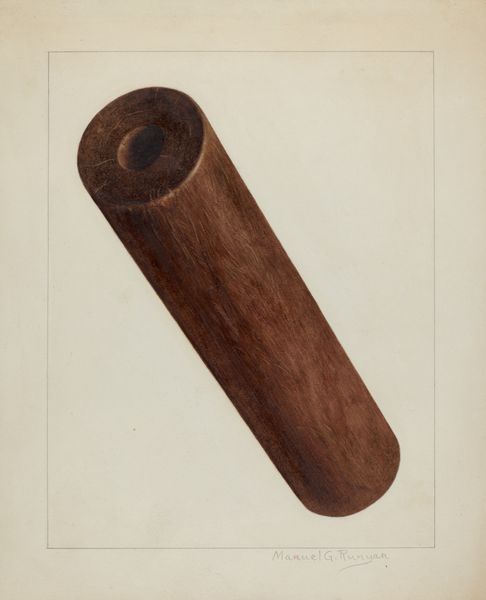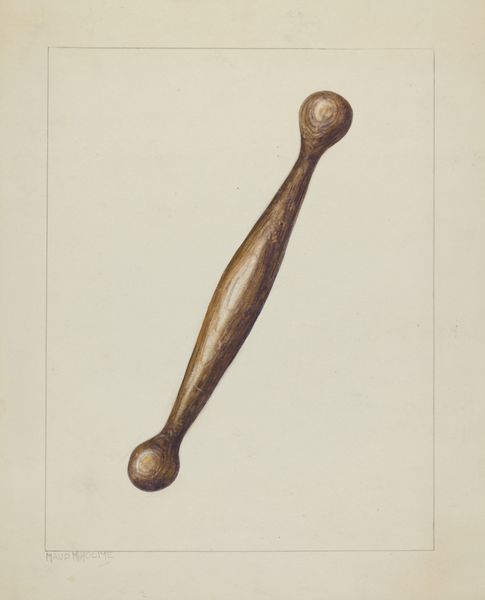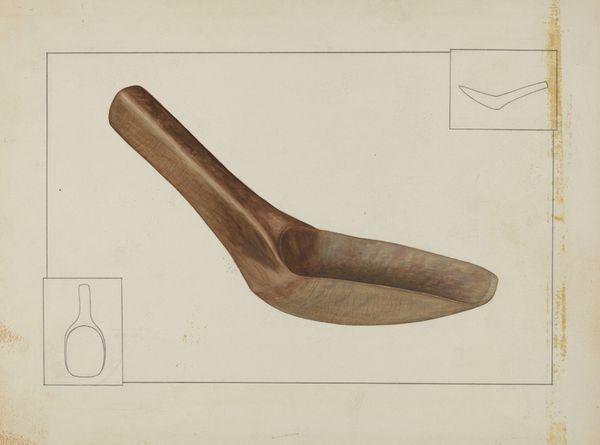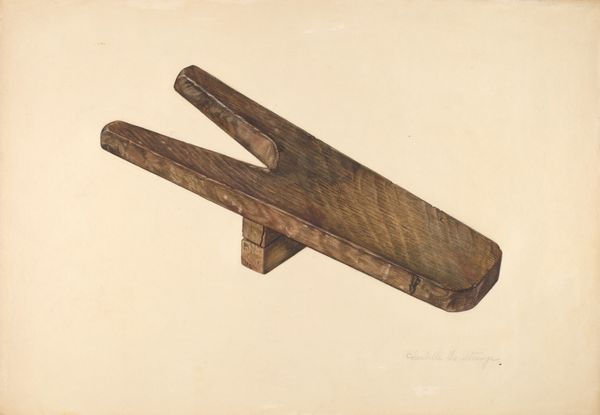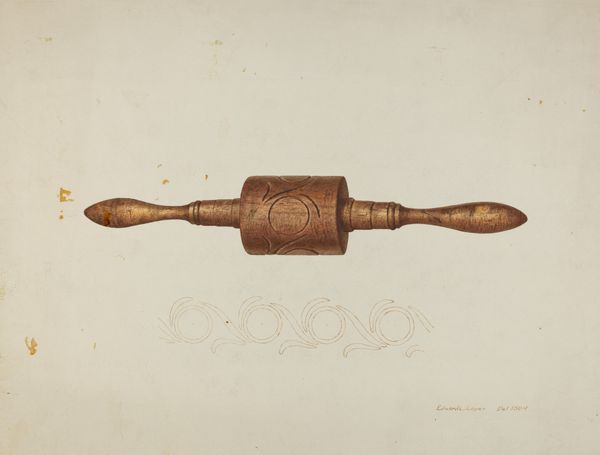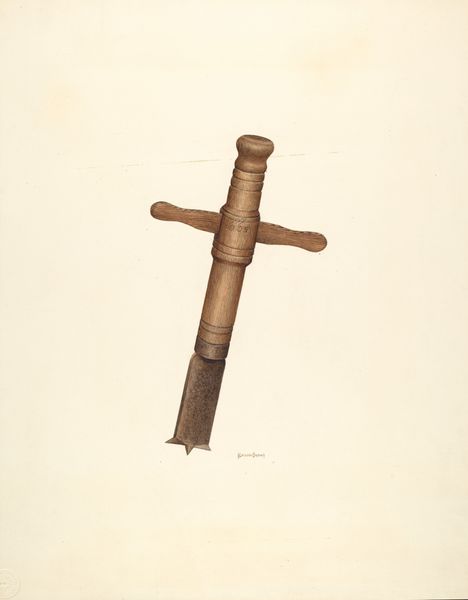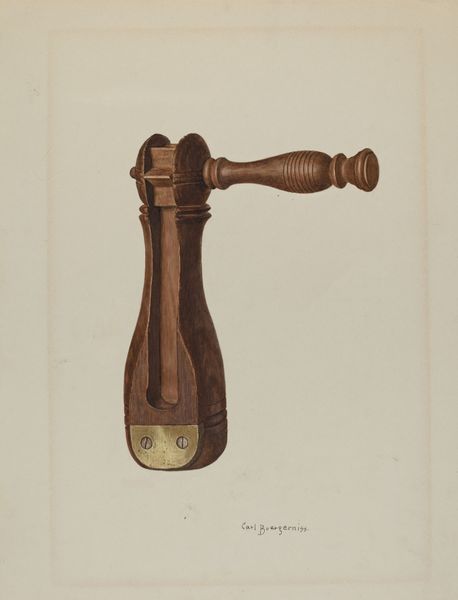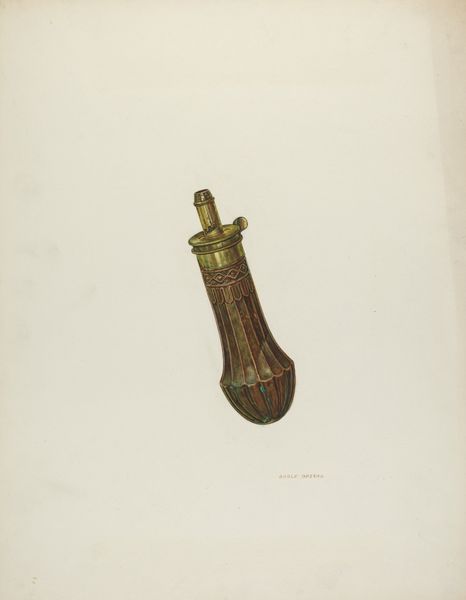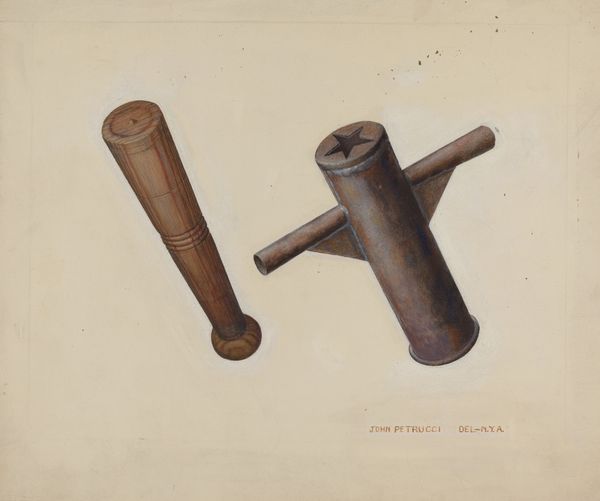
drawing, pencil
#
drawing
#
charcoal drawing
#
pencil drawing
#
pencil
#
realism
Dimensions: overall: 28 x 22.9 cm (11 x 9 in.) Original IAD Object: 14" long; 2 5/8" in diameter
Copyright: National Gallery of Art: CC0 1.0
Curator: Here we have Manuel G. Runyan's "Dough Rolling Pin," dating from around 1937. It’s rendered in pencil and charcoal. Editor: It’s strikingly still. I find myself considering the textures of wood, imagining the hands that used this tool. It feels quiet, but purposeful, in a way that reminds me of everyday acts of care and provision. Curator: Considering its production era, it’s compelling to view this through the lens of the Farm Security Administration's artistic programs. This seemingly humble object gains significance as a document of domestic life during the Depression. Runyan seems less interested in artistic innovation, more invested in portraying accessible reality. Editor: Precisely! Everyday labor is so often invisibilized. Placing it at the center challenges dominant narratives, pushing us to re-evaluate whose stories matter. Who was using this rolling pin, and what stories are embedded in its smooth surface? Was it for sustenance, or a source of connection to a heritage and culture? Curator: It also demonstrates the role of these federal art projects in creating opportunities for artists during times of hardship, which raises broader questions about how cultural institutions support art making, especially during times of social upheaval. Runyan, through what appears to be an uncomplicated piece, participates in something larger. Editor: Yes, and the choice of this particular tool—something tied to food production—it underscores the basic necessities and survival strategies during a difficult period. Its intimate scale is an act of resistance, isn’t it? A focus on the domestic is intrinsically political, considering the social expectations often placed on women. Curator: It definitely highlights the complex relationships between artistic output and the larger socio-political landscape. Thanks to programs like this, artists like Runyan could reflect the era while simultaneously becoming crucial parts of its documentation. Editor: I appreciate Runyan turning his artistic gaze toward these simple objects that echo the everyday and grounding our attention to overlooked histories of work, skill and even comfort. Curator: An extraordinary perspective, emphasizing art’s connection to lived experience and wider societal forces. Editor: Always remembering to consider context: how the art emerges from cultural narratives, engaging our minds in societal dynamics.
Comments
No comments
Be the first to comment and join the conversation on the ultimate creative platform.

